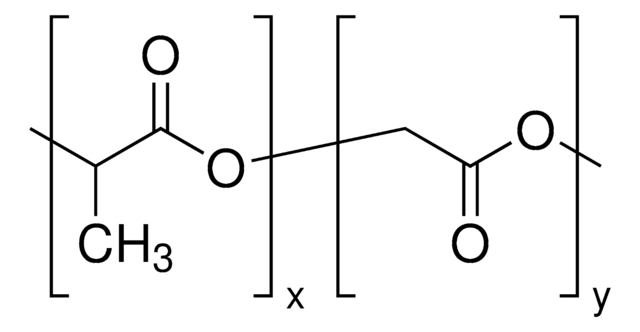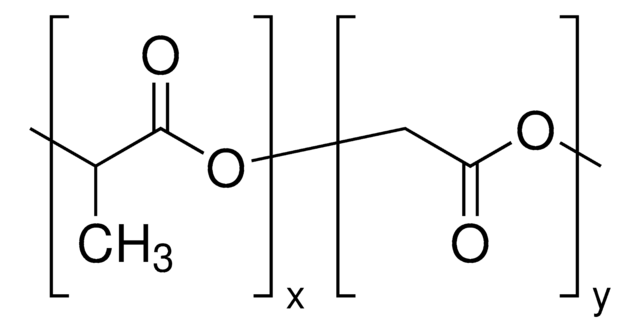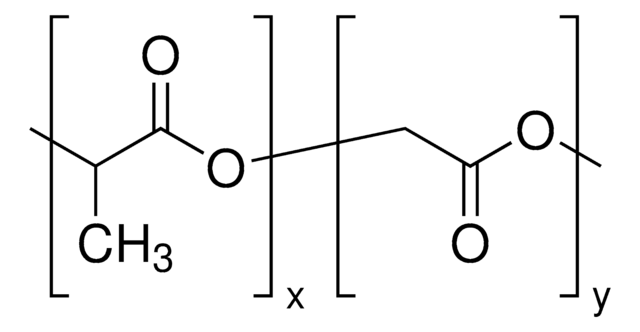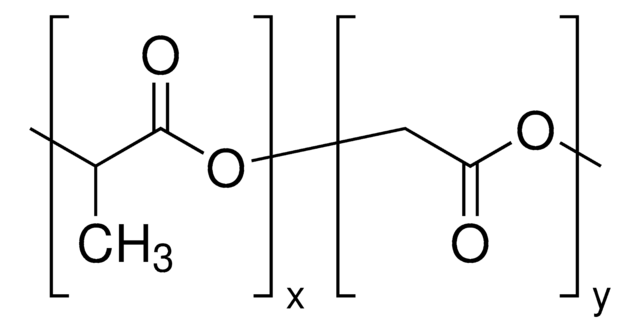719870
Resomer® RG 503 H, Poly(D,L-lactide-co-glycolide)
acid terminated, lactide:glycolide 50:50, Mw 24,000-38,000
Sinónimos:
Poly(D,L-lactide-co-glycolide), PLGA
About This Item
Productos recomendados
form
amorphous
feed ratio
lactide:glycolide 50:50
mol wt
Mw 24,000-38,000
degradation timeframe
<3 months
viscosity
0.32-0.44 dL/g, 0.1 % (w/v) in chloroform(25 °C, Ubbelohde) (size 0c glass capillary viscometer)
transition temp
Tg 44-48 °C
storage temp.
2-8°C
SMILES string
OCC(O)=O.CC(O)C(O)=O
¿Está buscando productos similares? Visita Guía de comparación de productos
Categorías relacionadas
Application
Features and Benefits
Physical form
Legal Information
related product
Storage Class
11 - Combustible Solids
wgk_germany
WGK 3
flash_point_f
Not applicable
flash_point_c
Not applicable
Certificados de análisis (COA)
Busque Certificados de análisis (COA) introduciendo el número de lote del producto. Los números de lote se encuentran en la etiqueta del producto después de las palabras «Lot» o «Batch»
¿Ya tiene este producto?
Encuentre la documentación para los productos que ha comprado recientemente en la Biblioteca de documentos.
Los clientes también vieron
Artículos
Interest in utilizing biodegradable polymers for biomedical applications has grown since the 1960s.
Synthetic aliphatic polyesters dominate resorbable biomaterials in clinical use.
AliAliphatic polyesters, including polylactide and polyglycolide, are biodegradable polymers widely used in medical applications.
Immunosuppressive tumor-associated myeloid cells (TAMC) are responsible for glioblastoma (GBM) resistance to immunotherapies and existing standard of care treatments. This mini-review highlights recent progress in implementing nanotechnology in advancing TAMC-targeted therapies for GBM.
Nuestro equipo de científicos tiene experiencia en todas las áreas de investigación: Ciencias de la vida, Ciencia de los materiales, Síntesis química, Cromatografía, Analítica y muchas otras.
Póngase en contacto con el Servicio técnico











